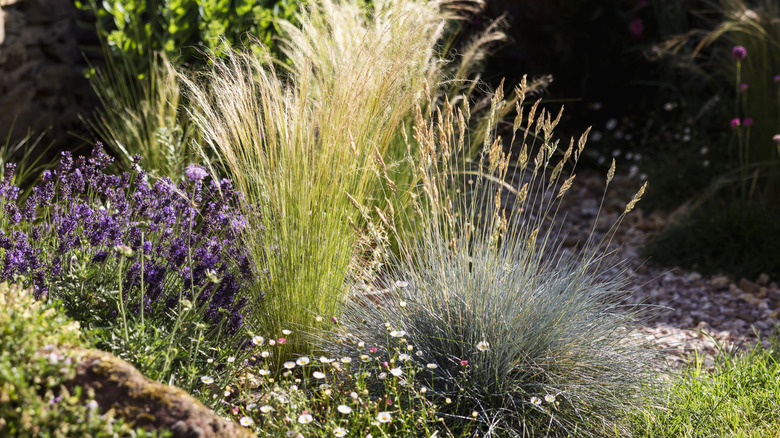The Best Tools To Cut Back Ornamental Grasses For A Thriving Landscape
We may receive a commission on purchases made from links.
Ornamental grass can be a great addition to outdoor gardens, patios, and even balconies, because many species can thrive both in soil beds and containers. Additionally, you can build a gorgeous windbreak with these grasses, creating a calming effect with their peaceful rustling and attractive vertical structure. Trimming these plants back correctly is important for a number of reasons. Primarily, cutting back the stems gives the plant enough of a reserve of energy for new growth, rather than focusing on old or dried-up shoots. This practice also helps with the overall look of the grass, as it allows you to remove debris such as dead leaves and pests more easily, which can otherwise cause it to look messy and unkempt.
However, it can be hard to know which tool to use for cutting back ornamental grasses to help them grow well, look more attractive, and help improve air flow to prevent rot. For compact species like blue oat grass (Helictotrichon sempervirens) — which thrives in Hardiness zones 4 to 8 and only grows to about two and a half feet wide — it's best to use a pair of pruning shears. For prolific grasses that are widespread and thick, you may want to use weed eaters, as this can speed up the process and make it easier on your back. A trimmer with a blade — such as this 3-in-1 weed wacker from Walmart — is best for this, as it provides a cleaner cut and reduces the chance of damaging other parts of the plant. For particularly condensed grasses, you could also use a powered hedge trimmer to help you tackle those really dense sections.
How to trim ornamental grasses with shears and weed eaters
Once you've decided what tool to use, it is important to know how and when to use it. When cutting back grasses with shears, gently tie the stems together before cutting, so they will all come off together rather than spreading all over the ground. You can also do this method with a weed eater, though you may need to tie the grass into several different groups if it's more spread out. You need to wear gloves during this process, as many ornamental grass blades can be sharp. You may also want to look up the best method for sharpening your garden shears to get a clean cut and prevent slipping. It can be particularly helpful to gently pull on the ends of the plant while wearing sturdy gloves to dislodge any blades of grass that have already died and come loose.
Warm-season ornamental grasses should be cut back in the fall or anytime after the grass turns brown. In places where fire is a significant risk, you can cut the grasses until they are a few inches above the ground. Alternatively, if your location does not suffer from frequent fires, you can choose to trim them back in spring to keep some of their visual appeal during the barren winter months. Cool-season grass species should be trimmed about two-thirds of the way down, but take care not to cut too far as this can permanently damage the plant itself.

